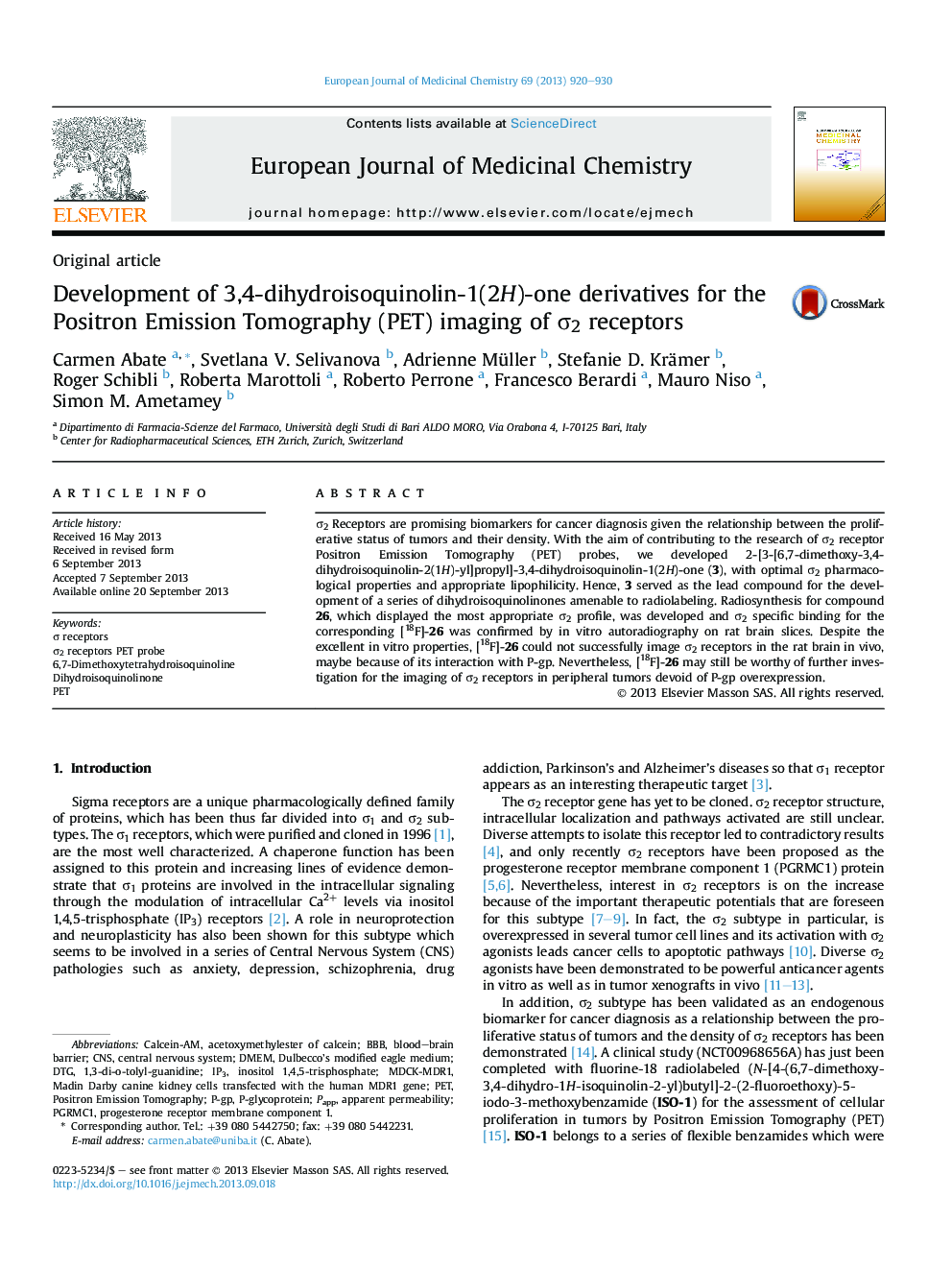| Article ID | Journal | Published Year | Pages | File Type |
|---|---|---|---|---|
| 1399054 | European Journal of Medicinal Chemistry | 2013 | 11 Pages |
•Development of σ2 selective dihydroisoquinolinones as potential PET tracers.•In vitro autoradiography with [18F]-26 showed σ2 specific binding.•Failure of [18F]-26 in the imaging of σ2 receptors in the rat brain in vivo.•BBB passage possibly hampered by interaction of [18F]-26 with P-gp.•[18F]-26 may still be valid for the imaging of σ2 receptors in peripheral tumors.
σ2 Receptors are promising biomarkers for cancer diagnosis given the relationship between the proliferative status of tumors and their density. With the aim of contributing to the research of σ2 receptor Positron Emission Tomography (PET) probes, we developed 2-[3-[6,7-dimethoxy-3,4-dihydroisoquinolin-2(1H)-yl]propyl]-3,4-dihydroisoquinolin-1(2H)-one (3), with optimal σ2 pharmacological properties and appropriate lipophilicity. Hence, 3 served as the lead compound for the development of a series of dihydroisoquinolinones amenable to radiolabeling. Radiosynthesis for compound 26, which displayed the most appropriate σ2 profile, was developed and σ2 specific binding for the corresponding [18F]-26 was confirmed by in vitro autoradiography on rat brain slices. Despite the excellent in vitro properties, [18F]-26 could not successfully image σ2 receptors in the rat brain in vivo, maybe because of its interaction with P-gp. Nevertheless, [18F]-26 may still be worthy of further investigation for the imaging of σ2 receptors in peripheral tumors devoid of P-gp overexpression.
Graphical abstractFigure optionsDownload full-size imageDownload as PowerPoint slide
